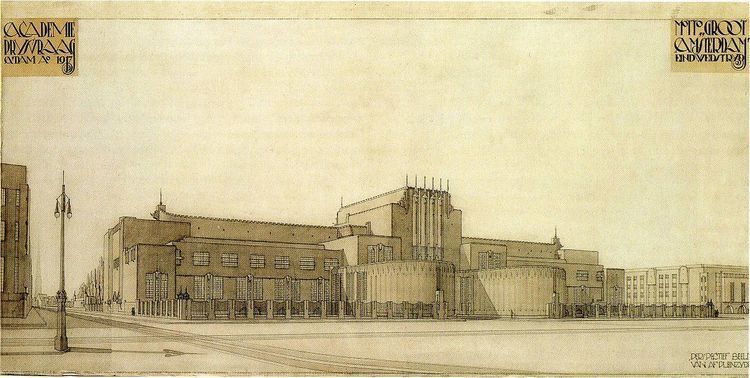Phone +31 20 527 0300 Province North Holland | Founded 1870 | |
 | ||
Similar Gerrit Rietveld Academie, Amsterdam School of the Arts, Sandberg Instituut, De Ateliers, Mk24 Profiles | ||
Guy giard merci janwillem schrofer rijksakademie van beeldende kunsten
The Rijksakademie van beeldende kunsten (State Academy of Fine Arts) was founded in 1870 in Amsterdam. It is a classical academy, a place where philosophers, academics and artists meet to test and exchange ideas and knowledge. The school supports visual artists with a two-year curriculum.
Contents
- Guy giard merci janwillem schrofer rijksakademie van beeldende kunsten
- 1718 to 1869
- Early history
- Present day
- Prix de Rome
- Faculty
- Students
- References
The Rijksakademie van beeldende kunsten was the home of Amsterdam Impressionism, part of the international impressionist movement, and is known as the School of Allebé by art historians; August Allebé became the school's director in 1880. Among its pioneers here were Georg Breitner, Jan Toorop, Piet Mondrian and Willem Arnoldus Witsen. Other artists connected with the academy were Hendrik Petrus Berlage, Willem Wiegmans, Constant Nieuwenhuijs, Karel Appel, Corneille, Ger Lataster, Willem Hofhuizen, and Jaap Min.
The school provides an education academically comparable with a university. There are open days each year, which provide an opportunity to see the work of young artists.
1718 to 1869
From 1718 to 1819 Amsterdam had an art school, the Stadstekenacademie Amsterdam. In 1820, the Koninklijke Academie van Beeldende Kunsten continued the artistic tradition. The prevailing style was panel painting in oil, landscape painting influenced by neoclassicism. In 1869, the Amsterdam school received its present name.
Early history
The academy was a place for philosophers, scientists and artists to come together and share knowledge and ideas. In 1870, the academy was founded by King William III as a successor to the 19th-century Koninklijke Academie, the 18th-century Stads Teekenacademie and the 17th-century Konstkamer to give visual artists an educational opportunity. Early students included George Hendrik Breitner, Isaac Israëls and Willem Witsen, who were influenced by Amsterdam Impressionism.
Under director August Allebé, the Saint Luke (patron saint of artists) student movement was founded. Allebé's cosmopolitan attitude changed the school's method of instruction, emphasizing the avant-garde.
Present day
Around 1985, the school received the additional title of Instituut voor Praktijkstudie and offered postdoctoral education. In 1992 it moved into a former cavalry barracks at Sarphatistraat 470 in Amsterdam, and the buildings were renovated. In November 1999, it became an independent art institution. The school is financed by the Ministry of Education and private sponsors. The institute offers workshops with specialized technical personnel and a library focusing on contemporary art and art history. Students receive a scholarship and are offered a studio in which to live. In recent years nearly 1,200 students have applied for a place at the academy, and each year about 20 are accepted. The artists come from all over the world, with less than half from the Netherlands. Artists and art critics are often invited to visit student studios.
Prix de Rome
The Academy awards a Prix de Rome to eligible artists and architects. The award originated with the French Prix de Rome in 1666. In 1808 Louis Bonaparte introduced the prize in the Netherlands to promote art, and it was supported by Dutch King William I. Since 1870 the Rijksakademie has made the award, the oldest and most valuable art prize in the Netherlands.
In 1985, the Prix de Rome was reorganised. Prize money was increased, and there were more participating artists; new art categories were added, which change annually. In 2006 its name was changed to "Prix de Rome.nl" and it is awarded in two categories: architecture and fine arts. The prize is €40,000 and a residency in Rome.
